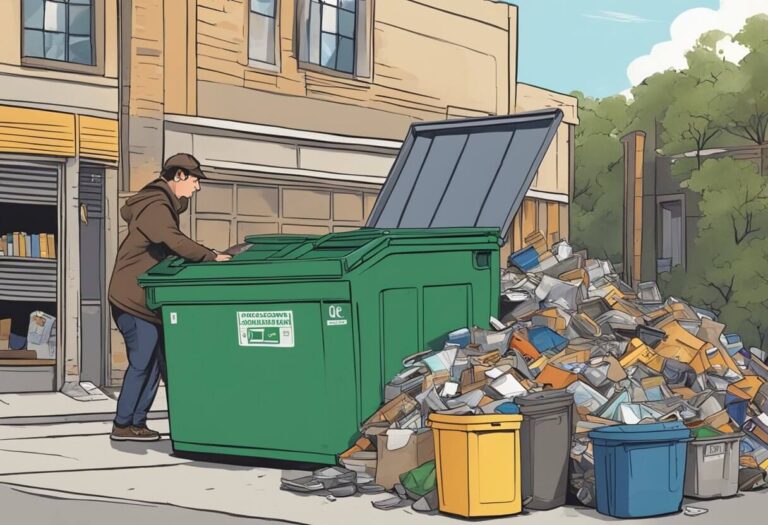Is It Illegal to Use an Expired Car Seat? A Must-Read Guide

Using an expired car seat is generally not illegal, but safety experts strongly recommend against it as it can increase the risk of injury to your child in a crash.
Car seats have expiration dates, which may surprise many parents. Over time, the materials in a car seat can degrade, compromising its ability to protect your child properly. This guide explores why car seats expire, how long they typically last, and the dangers of using an expired seat. We’ll also discuss state laws, proper disposal methods, and how to check your seat’s expiration date. Let’s ensure our little ones stay safe on the road.
Why Do Car Seats Expire?
It may seem counterintuitive that a non-perishable item like a car seat could have an expiration date. However, there are several valid reasons why manufacturers set expiration dates for their car seats.
Materials Degradation Over Time
The primary reason car seats expire is due to the gradual breakdown of their materials. Car seats are made from various components, including plastics, foams, fabrics, and metal parts. These materials can degrade over time due to exposure to extreme temperatures, sunlight, moisture, and general wear and tear.
Plastics, in particular, can become brittle and lose their strength and integrity as they age. Exposure to heat and cold cycles, as well as UV rays from sunlight, accelerates this process. Similarly, foams and fabrics can break down, losing their ability to provide proper cushioning and support.
Evolving Safety Technologies and Standards
Another factor contributing to car seat expiration dates is the advancement of safety technologies and testing standards. As research and data on child passenger safety evolve, manufacturers update their designs to incorporate the latest safety features and meet new crash test requirements.
An older car seat may not comply with updated safety regulations or lack the improved protection offered by newer models. By setting expiration dates, manufacturers can phase out older models and encourage the use of seats that meet the most current safety standards.
Wear and Tear, Missing Parts
Car seats endure a lot of wear and tear during their lifespan. Between frequent installations, removals, and the inevitable spills and messes that come with young children, it’s common for small parts or pieces to go missing or become damaged over time.
Missing components, such as buckles, straps, or adjusters, can compromise the seat’s ability to function correctly and protect your child in a crash. Setting an expiration date helps ensure that seats are retired before these issues become a safety concern.
Difficulty Obtaining Replacement Parts
As car seat models are discontinued, obtaining replacement parts for older seats becomes increasingly challenging. Manufacturers may no longer produce or stock these components, making it difficult to repair or replace worn or damaged parts on an expired seat.
Rather than risking the use of a seat with missing or non-functional components, expiration dates encourage the replacement of older seats with newer models that have readily available parts and support.
How Long Do Car Seats Typically Last?

Most car seat manufacturers set expiration dates between 6 and 10 years from the date of manufacture. However, the specific lifespan can vary depending on the brand, model, and type of car seat.
As a general guideline:
- Infant car seats typically expire around 6 years from the manufacture date.
- Convertible car seats (rear-facing and forward-facing) last around 7-8 years.
- All-in-one seats (rear-facing, forward-facing, and booster mode) may have an expiration date of up to 10 years.
Some car seat models, particularly those with steel reinforcements or other advanced features, may have longer lifespans specified by the manufacturer. It’s essential to check your car seat’s manual or contact the manufacturer directly if you’re unsure about the expiration date.
Expired Car Seats – Safety Risks
While an expired car seat may appear to be in good condition, using it can put your child at increased risk of injury during a crash. Here are some of the potential safety risks associated with expired car seats:
Inadequate Crash Protection
Over time, the materials in a car seat can degrade to the point where they may not provide adequate protection in a collision. The plastics may become too brittle to transfer crash forces effectively, and the foams may lose their ability to absorb impacts properly.
In a severe crash, an expired seat could potentially break apart or fail to restrain your child correctly, increasing the risk of serious injury or even death.
Non-Compliance with Current Safety Standards
Safety standards for car seats are continuously evolving based on research, crash test data, and technological advancements. An expired seat may not meet the latest safety regulations, lacking features or design elements that offer improved protection for children.
By using an expired seat, you could be compromising your child’s safety by not providing them with the most up-to-date safety features available.
AAP and Safety Organization Recommendations
Recognizing the potential risks associated with expired car seats, leading safety organizations strongly advise against their use. The American Academy of Pediatrics (AAP) recommends replacing car seats once they have reached their expiration date or 6 years from the date of manufacture if no expiration date is provided.
Similarly, the National Highway Traffic Safety Administration (NHTSA) and other child passenger safety organizations recommend adhering to the manufacturer’s expiration guidelines and replacing expired seats as soon as possible.
State Laws on Expired Seats
While there is no federal law explicitly prohibiting the use of expired car seats in the United States, some states have regulations that could potentially apply in certain situations.
Several states have “proper use” clauses in their child restraint laws, which require car seats to be used according to the manufacturer’s instructions. Since manufacturers specify expiration dates, using an expired seat could be considered a violation of these laws.
However, enforcement and interpretation of these regulations can vary from state to state, and specific penalties or fines may apply if a parent is found using an expired seat.
Check your state’s laws on child restraint systems and expired car seats. Consult local law enforcement or certified child passenger safety technicians for guidance on your state’s rules.
Risks of Using a Hand-Me-Down Seat
While the cost of car seats can add up quickly, especially if you need to replace them frequently, safety experts strongly advise against using secondhand or hand-me-down car seats unless you can verify their complete history and expiration status.
When accepting a used car seat from friends, family, or secondhand sources, you may be unknowingly obtaining an expired or damaged seat. The previous owner may not have been aware of the expiration date or may have failed to disclose any incidents or accidents involving the seat.
Additionally, used car seats may be missing crucial components or have worn-out parts that are difficult to identify visually. These issues can significantly compromise the seat’s ability to protect your child in a crash.
If you must use a secondhand car seat, thoroughly inspect it for any signs of damage, cracks, or missing parts. Check the manufacture date and expiration information, and avoid using any seat that is expired or has an unknown history.
How to Properly Dispose of Expired Seats
Once you’ve determined that your car seat has reached its expiration date, it’s crucial to dispose of it properly to prevent its accidental reuse by someone else. Improperly discarding an expired seat could potentially put another child’s life at risk.
Here are some recommended steps for properly disposing of an expired car seat:
- Disassemble the seat: Remove the fabric covers, padding, and any removable plastic or metal components.
- Cut or remove the harness straps: Using scissors or a utility knife, cut through the harness straps to render the seat unusable.
- Mark the seat as expired: With a permanent marker, clearly write “EXPIRED” or “DO NOT USE” on the plastic shell or base of the seat.
- Recycle components if possible: Many communities offer car seat recycling programs or events where you can responsibly dispose of the plastic, metal, and foam components.
- Properly dispose of non-recyclable parts: If recycling is not an option, place the non-recyclable parts in a sealed bag or container before putting them in the regular trash. This prevents others from inadvertently retrieving and using the expired seat.
Never donate, sell, or give away an expired car seat, even with the best intentions. Doing so could put an unsuspecting family at risk of using an unsafe seat for their child.
Checking Your Car Seat’s Expiration
To ensure you’re not using an expired car seat, it’s essential to know how to locate and interpret the expiration information. Here’s what to look for:
Manufacture Date
All car seats are required to have a date of manufacture printed on them, typically on a label or sticker. This date is crucial as it serves as the starting point for determining the seat’s expiration.
The manufacture date may be listed in various formats, such as month/year or a numeric code that the manufacturer can decipher. If you’re unsure about the format, consult your car seat’s instruction manual or contact the manufacturer for assistance.
Expiration Date or Life Span
Some car seat models will have the expiration date clearly printed on the label or sticker, making it easy to identify when the seat needs to be replaced. However, others may only provide the expected lifespan or longevity of the seat.
For example, a seat may indicate a 6-year or 10-year lifespan from the date of manufacture. In these cases, you’ll need to calculate the expiration date by adding the stated lifespan to the manufacture date.
Checking the Manual or Contacting the Manufacturer
If you’re unable to locate the expiration information directly on the car seat, your next step should be to consult the instruction manual. Manufacturers often provide detailed information about expiration dates and lifespans in the manual.
Alternatively, you can contact the car seat manufacturer directly, either through their customer service hotline or website. Be prepared to provide the model name, number, and manufacture date, as this information will help them determine the specific expiration date for your seat.
Registering For Recall Notices
It’s also a good idea to register your car seat with the manufacturer when you purchase it. This ensures that you’ll receive important safety updates, recall notices, or any other relevant information about your specific seat model.
Most manufacturers offer online registration or include a registration card with the seat’s documentation. Keeping your contact information up-to-date with the manufacturer can help you stay informed about potential issues or changes that may affect your seat’s safety or expiration status.
Signs You May Need a New Seat
While expiration dates are a good general guideline, there are other instances where you may need to replace your child’s car seat, even if it hasn’t technically expired yet. Here are some signs to watch out for:
Child Exceeds Height or Weight Limits
All car seats have specific height and weight limits that are critical for ensuring your child’s safety. As your child grows, they may outgrow their current seat before it reaches its expiration date.
Regularly check the manufacturer’s guidelines and make sure your child still falls within the recommended height and weight ranges for their seat. If they’ve exceeded these limits, it’s time to upgrade to the next appropriate seat.
Moderate or Severe Crash Damage
If your car seat has been involved in a moderate or severe crash, it’s generally recommended to replace it, even if there’s no visible damage. The forces involved in a crash can compromise the seat’s structural integrity, making it unsafe for future use.
Most manufacturers define a moderate or severe crash as one where:
- The vehicle had to be towed from the scene
- Any occupant sustained injuries
- The door nearest the car seat was damaged
- The airbags deployed
In these cases, it’s best to err on caution and replace the seat, regardless of its expiration date.
Visible Cracks, Damage, or Missing Parts
Regularly inspect your car seat for any visible signs of damage, such as cracks in the plastic shell, torn or frayed harness straps, or missing parts like buckles or adjusters. Even minor damage can compromise the seat’s ability to function properly and protect your child.
If you notice any of these issues, it’s time to replace the seat, even if it hasn’t reached its expiration date yet.
Budgeting for Replacements
Replacing car seats can be a significant expense, especially if you need to purchase multiple seats as your child grows. However, it’s an investment in your child’s safety that should be prioritized.
Consider factoring in the cost of replacement seats when budgeting for your child’s expenses. Some parents find it helpful to set aside a small amount each month or year to ensure they have the funds available when it’s time for a new seat.
Additionally, keep an eye out for sales, discounts, or trade-in programs offered by retailers or manufacturers, as these can help offset the cost of replacement seats.
Conclusion
While using an expired car seat may not be outright illegal in most areas, it is strongly advised against by child safety experts and organizations. The materials in car seats can degrade over time, compromising their ability to provide adequate protection in a crash.
Prioritizing your child’s safety should be the top concern, and that means adhering to the manufacturer’s expiration guidelines and replacing expired seats promptly. Be diligent about checking the manufacture date and expiration information, and don’t hesitate to contact the manufacturer if you’re unsure.
An expired car seat risks your child’s safety and is not worth the potential danger. Regularly inspect seats and replace them promptly when needed. A small cost today could protect your child’s life in an accident.






